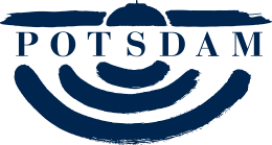Cherries, plums, and apples - these are the district treasures. The village and the fruit yard refer to the 800-year tradition in fruit growing. Surrounded by fruit plantations and the community's agricultural land Satzkorn is located in the north of Potsdam and became a new district of this city on October 26, 2003.
The village of Satzkorn was one of the earliest settled regions in Brandenburg - sensational discoveries of ribbon-type pottery refer to the 6th millennium BC. Other discoveries go back to the Bronze and Iron Ages and the time of the Roman emperors. The place was also mentioned in a document of the Spandau nunnery from 1332 and in the land register of the Emperor Charles IV of 1375.
A lineage of knights ruled the place for many centuries. In 1731, the bourgeois private physician of Frederick William I was able to purchase a manor in Satzkorn with the help of the king, and bit-by-bit enlarge it with the inclusion of all the former knights' domiciles (cf. The Myth of the Three-legged Hare). In 1739, Friedrich Brandhorst ordered the construction of the manor house which still exists today. The manor dominated the village for a long period of time - until its political and legal independence came to an end in 1928. After 1945, the manor estate was expropriated in the course of the land reform. It was converted to a state-owned farm and farm yards. Then the specialization in fruit growing and the transfer of large properties to the Marquardt LPG (collective farm) followed. The Obstgut Marquardt GbR is still in existence today, a company with its seat in Satzkorn, but its figurehead - the Obstscheune Satzkorn (the Satzkorn fruit barn) - is located on the territory of Marquardt.
There is a horse farm in Satzkorn specially dedicated to Friesian and Baroque horses. There are 26 accommodation boxes available for dressage and recreational riders and there is ample area to enjoy going out for a ride. Classical Iberian horsemanship and other rider training lessons are offered.
The volunteer fire-fighters are of major importance for Satzkorn, particularly because of their engagement with youth. The local senior group also contributes to the community's bonds through the organization of events and outings.
The Myth of the Three-legged Hare
The Prussian king Frederick William I wanted to enable his private surgeon to buy a manor estate in Satzkorn. However, one of the previous owners from the nobility, Cuno von Hünicke, refused to sell to a bourgeois. Therefore, the king had the Earl of Einsiedel take on the role of the purchaser, who then transferred the newly acquired estate to Brandhorst. Mr. von Hünicke was so upset about the king's coup that it is given as his cause of death. Now he is said to haunt around in the village of Satzkorn as a three-legged hare on certain nights. For a long time, the village boasted of an inn named "Zum dreibeinigen Hasen" (The Three-legged Hare).
